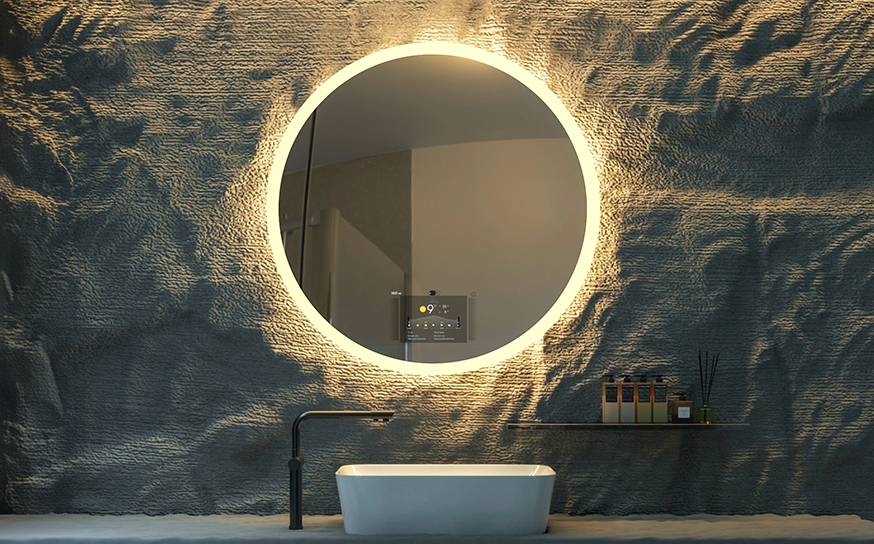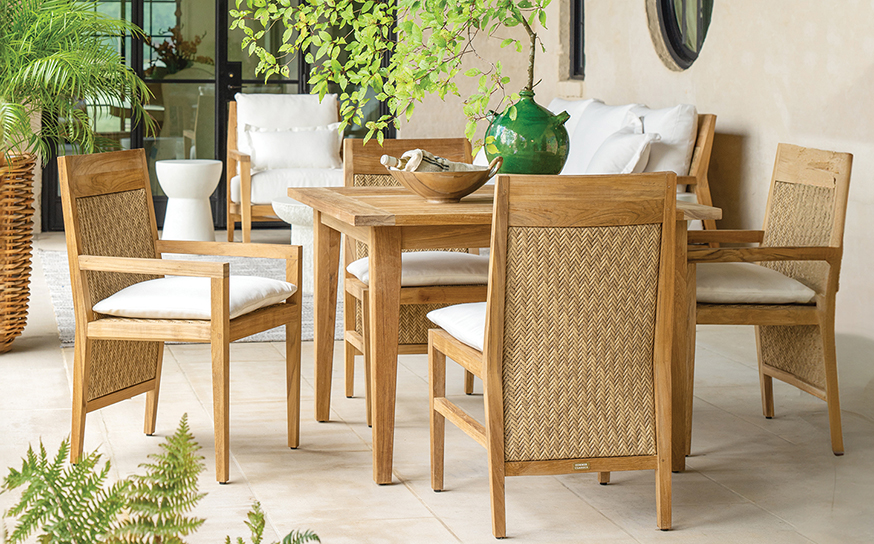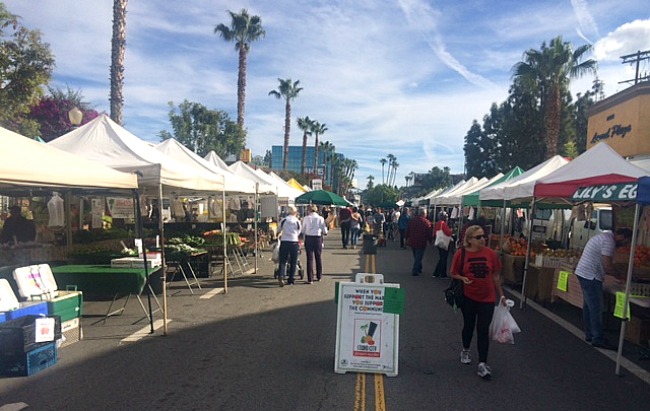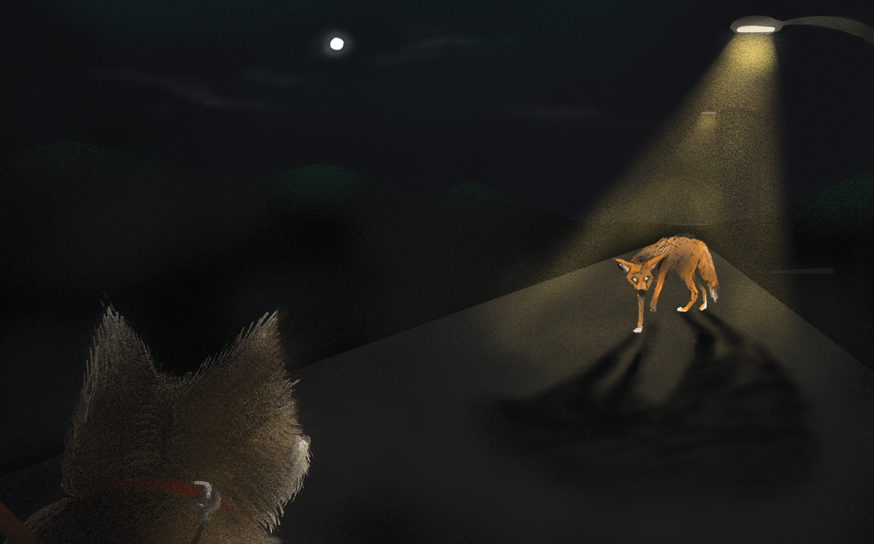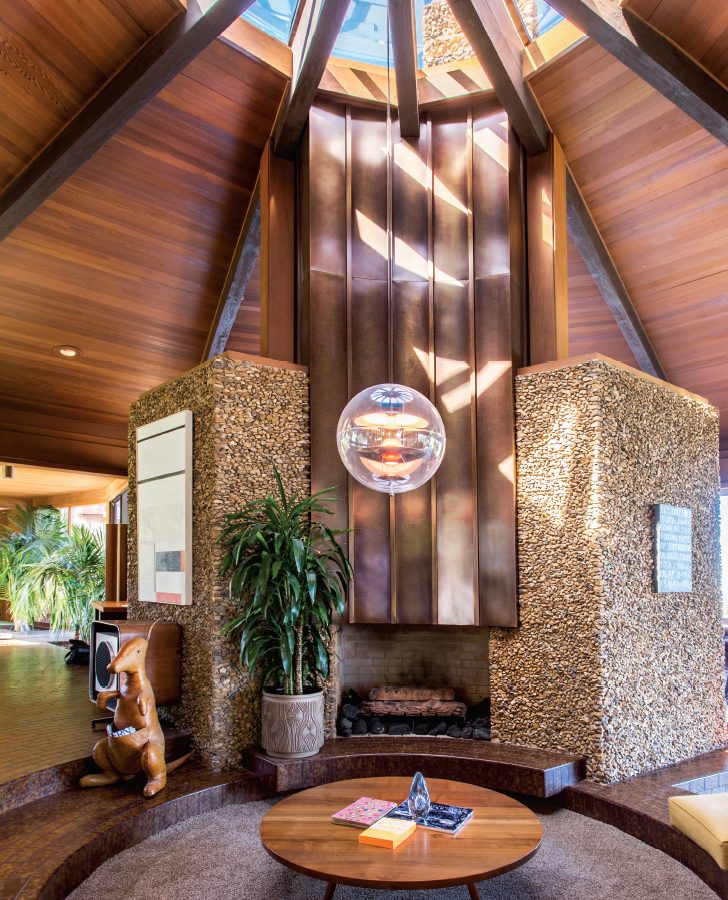
Life in the Round
A couple of art aficionados, who own one of the preeminent contemporary art auction houses in the country, find an architecturally significant home in Encino that befits their eclectic collection.
-
CategoryHomes
-
Written bySusan Spillman |
When Peter Loughrey first moved to California he was so enamored by the modernist homes he’d pass while driving through Brentwood and Bel Air that he’d often stop, ring the doorbell and ask the owner for a tour.
“A little old lady would answer and I’d say ‘Is this a Neutra house?’” recalls Peter, referring to pioneering Austrian-American architect Richard Neutra. “She’d say ‘Yes! How did you know?’ Then she’d let me in, make me a sandwich and show me around.”
That was back in the 1980s, well before Peter and his wife Shannon built Van Nuys-based Los Angeles Modern Auctions (LAMA) into a prominent international auction house, specializing in selling 20th century modern art and design. And well before the couple moved into their own architecturally significant and uniquely stunning abode.
Passersby aren’t likely to randomly stumble upon the Loughrey’s 5,400-square-foot nest, though. The property, which realtor.com describes as “mid-century modern meets Las Vegas glam,” sits on 1.3 acres atop a dead-end street. Perched high in the hills near Lake Encino, it boasts 250 degree views of the canyons and Valley.
The home’s most striking feature is its shape, which consists of two rotundas connected by a glass walkway. LA architect Donald G. Park, who spent a decade working for acclaimed modernist A. Quincy Jones, built the home in 1972 for nightclub titan Joby Lewis and his wife, Helen.
“Park always wanted to build a custom circular house but had to wait until he found someone willing to spend what it would cost,” says Peter, who invited the architect over to reminisce when he and Shannon bought the home from the Lewis’ trust in 2011.
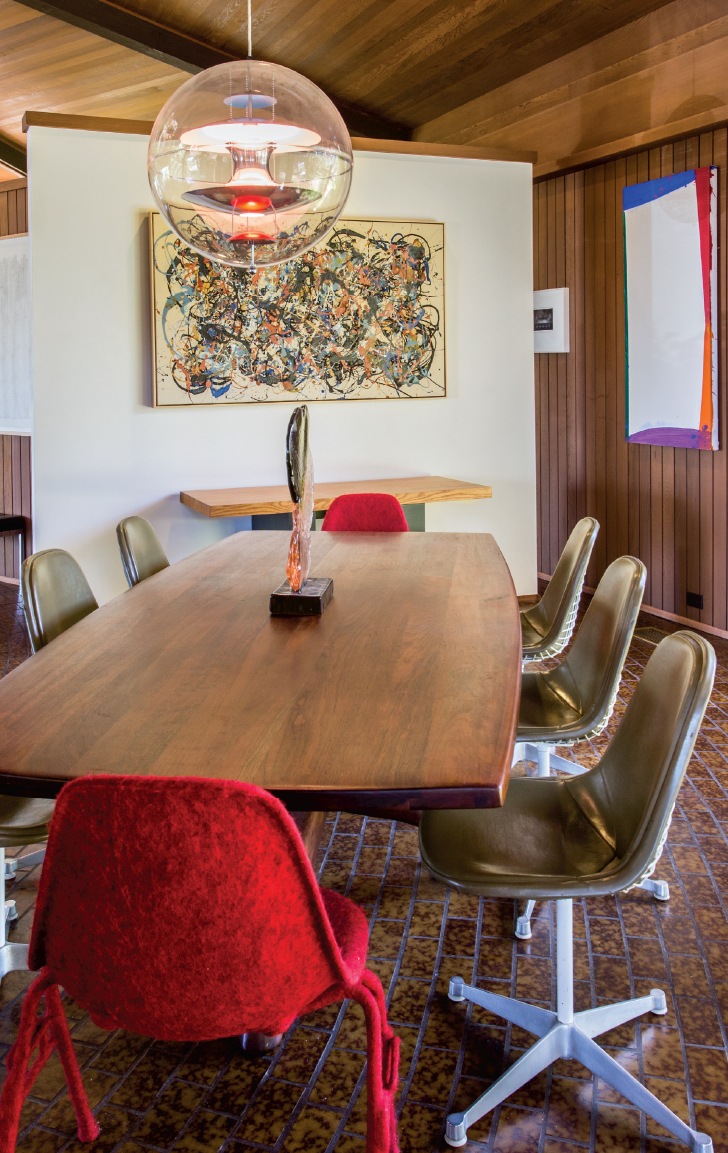
The circular structures, (they’re technically “dodecagons” comprised of 12 faceted surfaces), as well as the numerous floor-to-ceiling glass panes, provide one of the home’s most attractive features. They are also one of its greatest challenges—in terms of decor.
While the expansive glass allows light to stream into rooms from multiple angles, offering jaw-dropping views, the lack of wall space limits the amount of furniture that fits and art that can be hung.
“We moved from a 2,800-square-foot house in Sherman Oaks to one that’s almost double the size, but we have less furniture,” says Shannon.
Despite being avid dealers and collectors, Peter and Shannon, who’ve been married 21 years, skillfully pared down, selectively blending their favorite new and vintage pieces.
In the dining room five small paintings by contemporary LA artist Richard Pettibone hang above a cabinet by Italian designer Gio Ponti. In the hallway, a small black and white drawing of flowers by contemporary LA artist Jonas Wood hangs opposite a large colorful Henri Matisse tapestry.
“Jonas Wood is a great young artist whose work has elements of Matisse,” explains Peter. “I love coming down the stairs and seeing the way these two pieces dialogue with each other.”
Having an eye, not to mention a vast inventory, certainly helped. A circa ‘72 glass, bowl-like light fixture, dug out of a box in the Loughrey’s warehouse, turned out to be the perfect piece to hang over the dining room table.
“I bought it in Amsterdam about 18 years ago,” says Peter. “When we moved in, it just dawned on me that I think I have the right fixture.”
Among the home’s most loved spaces is the “conversation pit,” a cozy, sunk-in seating area, straight out of Don Draper’s Manhattan apartment in Mad Men.
“It encourages interaction,” says Peter. “If you go to someone’s house you tend to sit around the dining table after the meal, and in about 20 or 30 minutes someone says ‘I have to go’ and the whole thing breaks up. As soon as the last bite of dinner is done, we get everybody up and over to the conversation pit, and they wind up staying for hours.”
Also adding to the house’s coolness quotient: small steps that lead up and down between rooms, partial walls and the incorporation of nature.
Palm trees bloom from planters built into the floor along the glass walkway. Granite rocks sourced from the property and hand chopped during construction cover several walls, while California old-growth redwood lends warmth throughout.
Since moving in, the Loughreys have made minimal changes to the interior. “We basically just did a lot of editing,” says Shannon. That mostly consisted of removing lots of heavy swag drapes and floral wallpaper.
For now though, the Hello Kitty-themed pink and purple kitchen is staying as is.
“At first I was like ‘Wow. This is a really bright kitchen,’” admits Shannon. “But after living here for a few years, we realized it really mimics the colors in the sunsets you see from the kitchen window. We have the most gorgeous sunsets.”
The avocado-green guest bathroom with its pie-shaped shower is a keeper too. “It’s so crazy we just decided to leave it,” says Peter.
He and Shannon are totally at home in their spectacular digs, yet it’s a long way from the van, boat and friend’s garage—places Peter crashed when he first arrived in LA from Salisbury, Maryland over two decades ago.
Peter was in his early 20s when he moved out to help his brother Joe, who’d started an antique business and had just been diagnosed as HIV positive. “I took a year off college to help him and fell in love with the business,” he explains. “We started out selling out of little garage in West LA and a few years later opened a gallery on La Brea.”
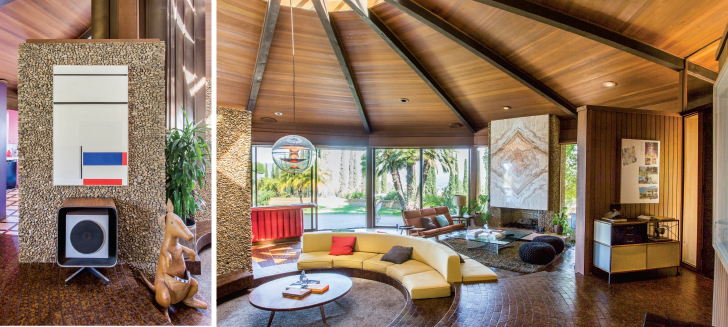
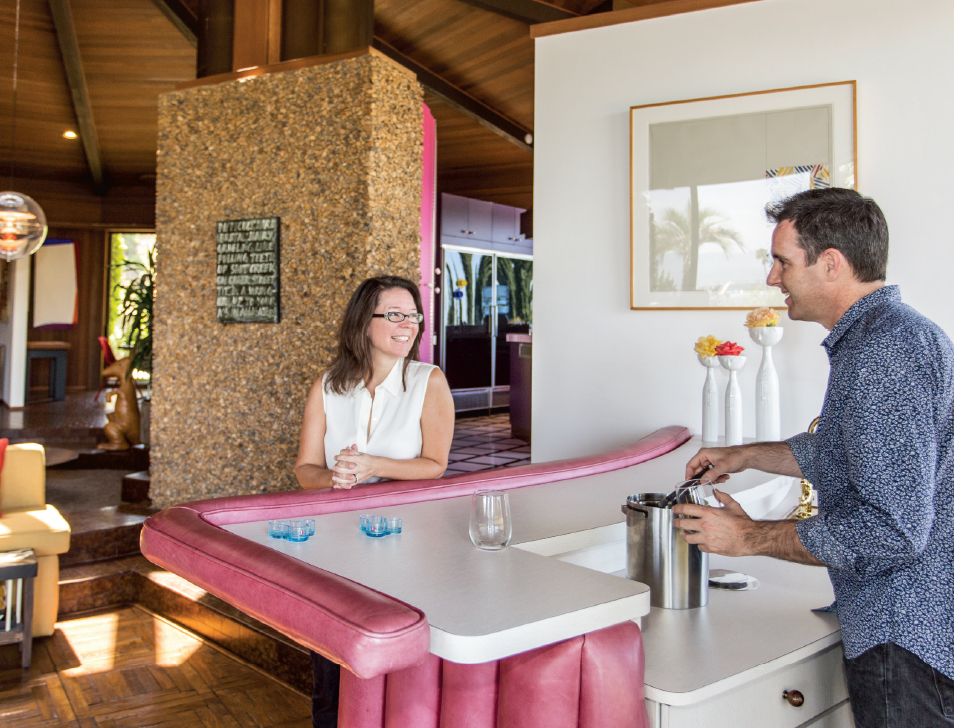
Economics motivated them to focus on under-appreciated modern designers, like Charles Eames and Neutra, who had only cult followings at the time. “It was easier to go and get those things than it was to try and get pieces from big names. How do you get to Frank Lloyd Wright when you’re a kid?”
Peter still has a soft spot for unsung talent. Among his personal favorite pieces is a large painting by Russian-born Ilya Bolotowsky, a follower of Mondrian whom he calls “incredibly underappreciated.” He also purchased a one-of-a-kind concrete chair by Tejo Remy because he was disappointed nobody showed up for the designer’s show at the Pacific Design Center.
When Joe died in 1993, Peter closed the business and went to work for a medical software company. Almost as soon as he realized that was a mistake, he was diagnosed with lymphoma. While undergoing treatment at the National Institute of Health, Peter reconnected with Shannon, a childhood friend, who is also from Maryland’s Eastern Shore, and was working at NIH.
It was the start of a beautiful romance and business partnership, as well as Shannon’s art education. “Peter had a Vitra design poster of 1000 chairs on his hospital room wall and went through and explained each one to me,” she recalls.
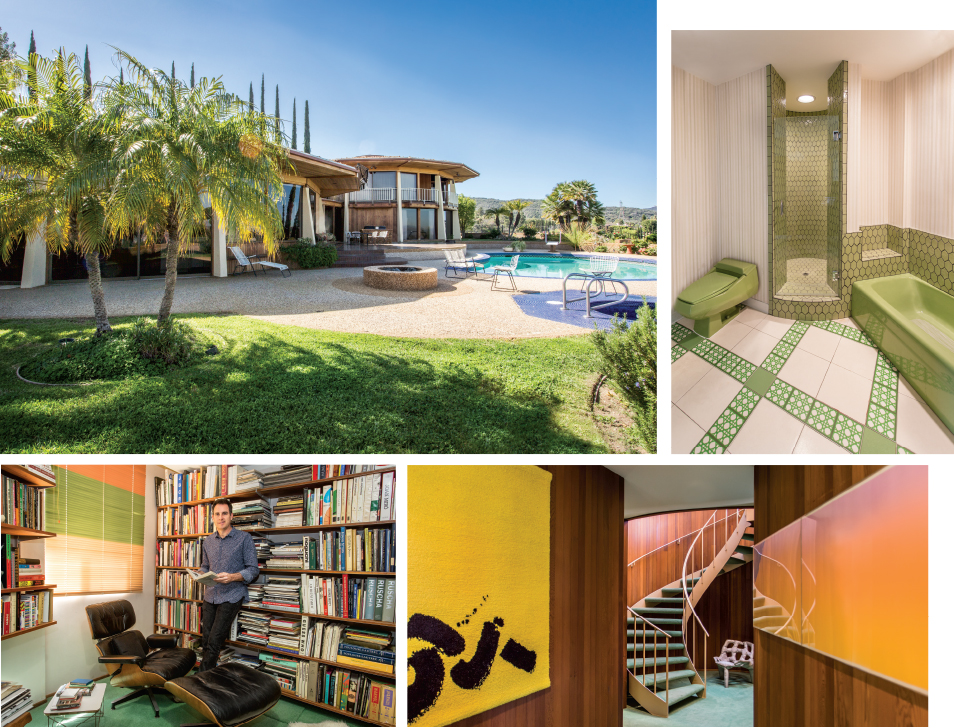
Up until that point, Peter himself had been strictly self-taught, but after finishing his treatment at NIH, he went to London to work and study at Sotheby’s.
The following year he and Shannon moved to LA and opened LAMA on Beverly Boulevard. Their timing couldn’t have been better. It was the early 1990s and the sleek lines, geometric forms and use of nontraditional material in modern design were suddenly the rage. And Peter already had relationships with the most coveted designers, such as Julius Shulman, Vladimir Kagan, George Nelson and Charles Eames.
In 2003, they moved their base to the Santa Monica Airport and then later to the Pacific Design Center before winding up at their current location in 2008—a 10,000- square-foot facility in Van Nuys.
Peter is the artist/curator of the business. Shannon, who double majored in college in accounting, and business and finance, is the planner. “At first we did everything ourselves,” she says.
Now LAMA employs a staff of nine and holds up to three auctions a year, plus a recently added annual warehouse sale. The auction house handles a full scope of art and furniture from the 20th and 21st centuries, ranging from resin sculptures by Peter Alexander, to ceramic works of Pablo Picasso to Paul Frankl tables and chairs.
In February, LAMA set a new company record, selling Richard Prince’s Bedtime Story (1988) painting from the artist’s series of Monochromatic Joke Paintings for nearly $1.6 million, the highest price for a single work of art sold by LAMA.
LAMA has also held auctions of many prominent Southern California estates, including that of late actor Jack Larson and his partner, writer-director James Bridges, who owned the famed George D. Sturges Residence built in Brentwood by Frank Lloyd Wright. The prized archive included original dining room chairs that Wright designed for the house and art collected by the couple. Among those pieces were several original works that were gifts from the artists themselves, including David Hockney, Andy Warhol and Alex Katz.
“The actual auctions are really fun,” says Shannon. “People are excited, we bring in food trucks. It’s a great day.”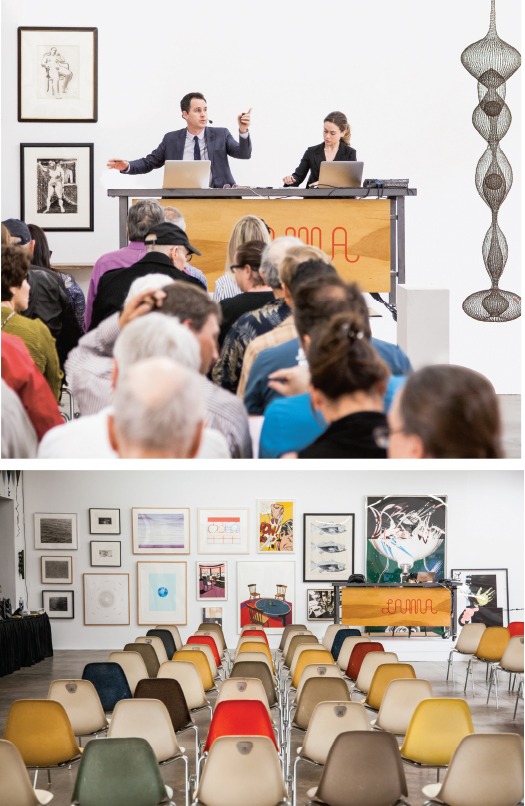
Each auction offers between 300 and 500 lots and lasts most of the day. Prospective customers—there are usually over 300—receive a glossy coffee-table-worthy catalog of the items to be sold. If you’re among the first 100 to show up, you’ll get to sit in an authentic Eames molded plastic side chair.
These days, however, many buyers are from Asia and Europe who scout the offerings on LAMA’s website and bid by phone.
“The internet has totally changed the business,” says Peter. “You don’t need to be on the Westside anymore. It’s allowed us to be right here in the Valley.”
Architect May Sung Comes to The Rescue on a Studio City Reno Gone Wild
In the right hands…finally!






